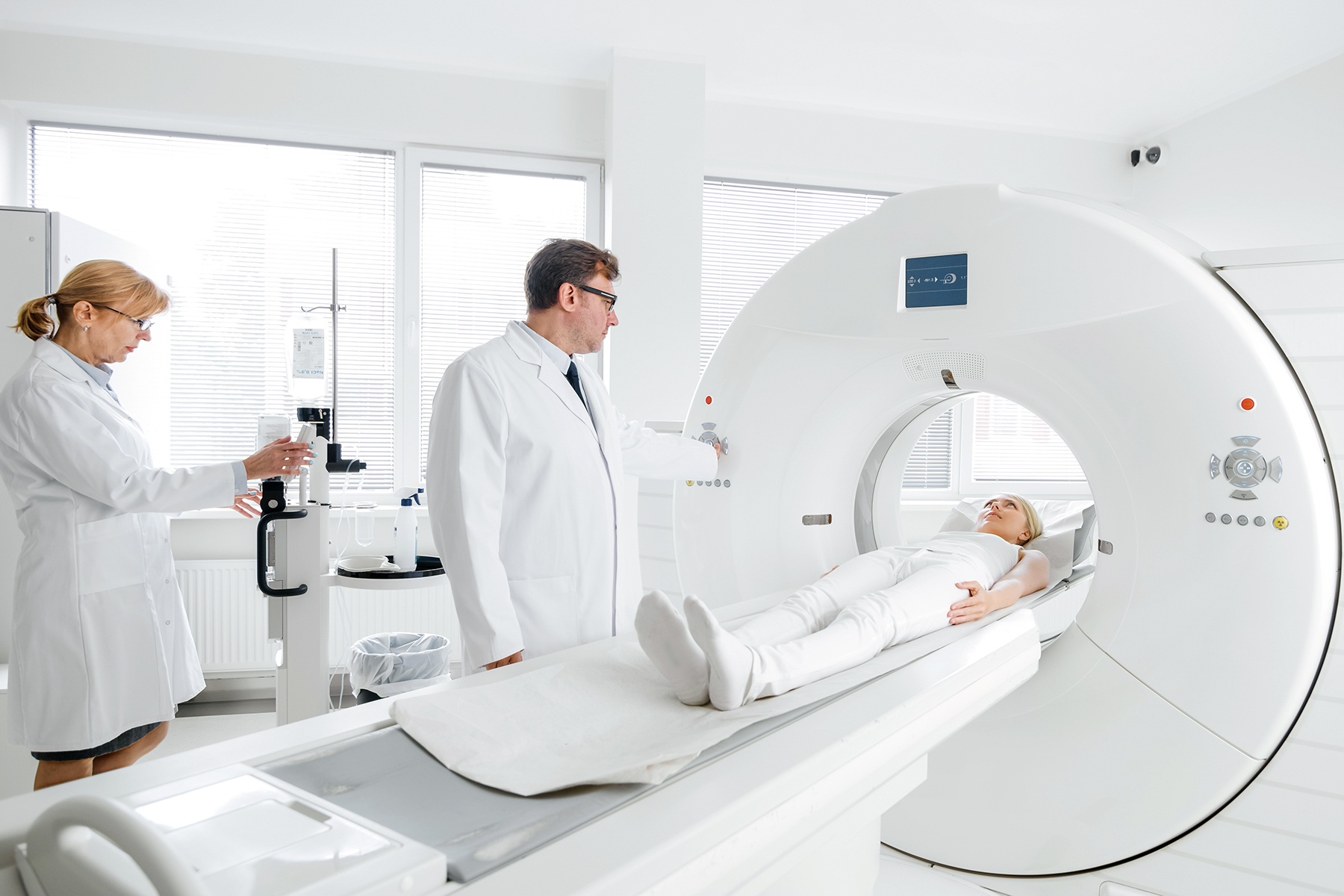Taking time out of your busy schedule to see a doctor for suspicious symptoms, a new ache or pain, a nagging cough, or any other unexplainable health concern doesn’t usually rank high on the list of things to do. But it should, especially if the concerning symptoms could be cancer.
Most types of cancers have the best chance of being successfully treated when caught in their earliest stages. Ignoring symptoms can be dangerous, or even deadly.
The COVID-19 pandemic drastically slowed down routine medical exams and screenings. Doctors in all specialties continue to urge people to keep appointments for their annual exams, see their doctors for new health concerns, and get recommended tests and screenings. “COVID-19 has been a challenge in many ways, including significantly reduced medical screenings,” says Dr. R. Steven Paulson, medical oncologist and president and chairman of the board at Texas Oncology. “People are delaying cancer screenings, such as mammograms and colonoscopies, and the result has been an increase in the overall of number of cancer patients. We are seeing more advanced cancers at the time of diagnosis. Our message is, when cancers are screened for and caught early, the quality of life for a cancer patient is excellent and the chance of a cure is much, much higher. Screening is still critically important—even in a pandemic.”
Although there is collective concern from physicians about the potential uptick in cancer diagnoses due to a decline in screening rates during the pandemic, there is still plenty of good news in the field—particularly in Dallas. Just 10 years ago, most cancer treatments were designed to address cancer cells that were growing faster than normal cells. Essentially, treatments were directed at eliminating the fast-growing cancer cells with the hopes that healthy cells would recover, Dr. Paulson says. “Today, rather than differentiating treatments based on rapid cell growth, we look at mutation patterns and target the specific mutations that turned the cells into cancer,” Dr. Paulson says. “This results in much less damage to the normal ‘good guy’ cells around it. Innovative treatments, such as immunotherapy and CAR-T where we can target specific aspects of cancer cells through the immune system, are significant advances that have improved the longevity of those with cancer, as well as their quality of life.”
Dr. Paulson predicts that therapies like this will only continue to improve. For instance, CAR-T therapy can be curative for hematologic cancers, but in the future, it will expand into the treatment and management of tumors. In the next three to five years, these treatments should allow for increased outpatient therapy that is more affordable and less toxic. And Texas—specifically Dallas—will be a major player in these advances in cancer care. “Texas, as a whole, has excellent cancer care, and when you look at Dallas’ overall survival rates, they are much better than the national average,” Dr. Paulson says. “Even in rural Texas where there are some challenges with access to care, the overall quality of care and survival rates are quite good.”
For anyone diagnosed with cancer today, particularly if the cancer is caught in its earliest stage, the outlook for successfully managing and, hopefully, beating the disease is better than ever. But it all starts with being proactive in your care. According to Dr. Paulson, it’s important to be educated and do research about your cancer diagnosis, but to heavily lean on the advice and expertise of the physician you choose to partner with you in your care.
“The most important thing you can do is talk to your referring physician about recommendations,” he says. “Be frank with your physician about your anxiety and be prepared with questions. Choose a physician you have confidence in and feel comfortable with. Pay attention to your own body; if something seems or feels different, don’t delay screening or an evaluation. You are your own best advocate when it comes to your health. Get evaluated early so the disease is still in most treatable stage.”
[img-credit align=”aligncenter” id=” 869512″ width=”677″]
 [/img-credit]
[/img-credit]Beyond Treatment
Cancer Support Groups Offer an Added Layer of Care
Anyone who has had cancer knows it affects much more than the body. It makes an impact on one’s psychological and emotional health, too. This is why so many oncologists want to “treat the whole person” when it comes to effective cancer care. Many cancer patients find that support groups offer another layer of healing as they navigate their way from diagnosis to treatment and beyond. In addition to being a valuable source of information, support groups can help resolve feelings of isolation and loneliness. As bonds form in support groups, participants learn new coping skills, develop friendships, and exchange information and resources.
Stephanie Broussard, MSSW, LCSW, ACHP-SW, director of palliative care and social work at Texas Oncology, says she has seen first-hand how support groups can make an impactful difference in patients’ lives “For the most part, people are overwhelmed,” she says. “Some patients are ready to get started and seek out additional supportive services. Others are shell-shocked and not sure what to do. I had one patient who said she felt numb and stayed that way in order to process it—like turning off a switch in her brain. There are all different kinds of reactions because we all take in information differently. The overarching response to a cancer diagnosis is the realization that this is a moment that will change your life forever.”
Broussard says the first step following a cancer diagnosis is to assemble a comprehensive medical team, which often includes a discussion about supportive services. Social workers are frequently engaged to help address the patient with practical needs and help patients and families cope with the emotional stressors of living with cancer. Texas Oncology offers several types of cancer support groups, and the topics vary depending on the type of cancer, but most cover coping skills, how to build your emotional toolbox when fighting cancer, proactive self-care, mindfulness and meditation, and how to navigate changes in your body from a psychological, social, and emotional perspective.
“Cancer support groups are safe places to process life’s stressors, fatigue, and anxiety that can accompany a cancer diagnosis.”
Stephanie Broussard, Texas Oncology
Support groups also help cancer patients learn how to communicate with loved ones during their treatment. “I often hear from patients that people in their lives don’t know how to support them, or maybe the support they are getting is not the support they need,” Broussard says. “It can feel like a lonely journey and that you are the only person having your experience. Support groups validate your experience. Knowing you aren’t alone is so helpful. We also try to engage caregivers so they can learn how to best support their loved ones. Outside of one-on-one options, we collaborate with the Texas Oncology Foundation to provide caregiver support groups.”
Cancer support groups can create a small community, which gives patients a connection they didn’t even know they needed. Broussard recalls a breast cancer support group that connected in such a strong way that a few members became a lifeline to each other during the winter storm that affected Texas in early 2021. “There is no requirement to share contact information or interact outside of the group meetings, but this group provided the support system their members needed during the ice storm,” she says. “This is what happens when people are open and willing to connect. We hear a lot of feedback about how our support groups improve patients’ overall well-being and provide a safe space to communicate and connect.”
[img-credit align=”aligncenter” id=” 869513″ width=”677″]
 [/img-credit]
[/img-credit]Pediatric Cancer
Where children with cancer receive treatment makes a difference.
While the incidence of pediatric cancer is low, the survival rate—more than 80%—is high, and a major factor in successful treatment for these young patients is where they receive their care—not only in the quality of care received but the support provided to navigate their journey.
“For most pediatric cancers, it’s a huge time burden for the family in that there is a lot of back and forth from home to hospital and many nights spent at the hospital,” says Dr. Stanton Goldman, pediatric oncologist at Texas Oncology-Medical City Dallas Pediatric Hematology-Oncology. “If you have integrated care nearby, it’s better overall for these families because cancer affects the whole family.”
For more than 25 years, Texas Oncology has served pediatric patients and their families in North Texas. Texas Oncology’s pediatric hematology and oncology program is designed to “treat the whole family” and offer a highly specialized, multidisciplinary team approach to pediatric cancer care. The team includes pediatric specialists in oncology, surgery, radiology, nursing, social work and support services, pharmacy, physical therapy, and child development working together for patients and their families. Texas Oncology is a member of the Children’s Oncology Group, an initiative funded by the National Cancer Institute. This group is focused exclusively on conducting clinical trials for children and adolescents with cancer and enables patients to access the most promising new cancer treatments.
“Texas Oncology has teamed up with the top pediatric hospitals in North Texas to offer innovative clinical trials and leading-edge treatment protocols,” Dr. Goldman says. “We have a marriage that emphasizes home and outpatient care where, combined, we offer the best of all worlds, including an outpatient pharmacy, outpatient infusion center, and proton therapy at Texas Center for Proton Therapy in Irving. It all adds up to deliver a wonderful care experience for our patients and their families. We collaborate and share our expertise.”
The biggest risk for cancer is aging, which is one reason children don’t have as high of an incidence of cancer as adults. Pediatric cancers, as compared to breast, prostate, lung, and colon cancer in adults, is extremely rare. Even so, the fight to cure childhood cancers remains strong. Dr. Goldman has been impressed with new therapies that target the genetic trigger that drives cancer. It’s a more narrowed approach than traditional chemotherapy, which has a risk of killing healthy cells along with cancer cells and is difficult for children to tolerate. “The younger the child, the higher the likelihood there is a genetic predisposition or mutation that leads to certain cancers,” he says.
Texas Oncology currently has more than 70 open trials for pediatric cancer through the National Cancer Institute, including a pediatric match study for children with recurrent cancers, such as bone cancer or lymphoma. “The goal is for every child to be cured and for these trials to contribute to a long-term cure and reduced toxicity of therapy of children with the same disease in the future,” Dr. Goldman says. “Many of our trials are designed to test the ability to incorporate immunotherapy earlier in treatment, rather than during the relapse of disease. Most adults (with cancer) don’t go on clinical trials, but the majority of pediatric patients do. If you look at certain populations, such as 15- to 21-year-olds with acute lymphoblastic leukemia, if treated in pediatric cancer care centers, they have a cure rate double than if treated in adult centers, which is why many treatment centers for adults are adopting some of the pediatric treatment regimens. We are seeing real improvements, even in aggressive metastatic cancers.”
Advances in Brain Tumor Treatment
Q & A with a Dallas Neurosurgeon
What are the newest advances in treating brain tumors?
“Treatment should be a team effort and include the expertise of a neurosurgeon and neuro-oncologist, chemotherapy, and targeted treatments to have the best opportunity for a cure or to live longer. Many benign tumors we can completely cure, particularly with image-guided technology that has allowed for tremendous advancements in our capacity to resect tumors more efficiently and effectively.”
What should I look for in a neurosurgeon to treat my brain tumor?
“It’s important for a brain surgeon to first and foremost calm the patient and help them realize that in 2021 and going into 2022, there are so many different types of treatments, and resecting tumors is so much more effective today. We can develop a specific plan to address the tumor they have in a scientific and orderly fashion. This is a problem, and problems have solutions. Many patients with brain tumors are surprised to learn they can have surgery, spend a few days in the hospital, then go home.”
What are some symptoms of a brain tumor?
“Severe headaches you haven’t experienced before; having seizures when you haven’t had them before; experiencing a neurological deficit, such as numbness, weakness, facial droop; or noticing a new problem with speech. These by far are the most common ways people present with a neurological problem that could be caused by a tumor. If you experience weakness or numbing in the face, go to your doctor or to a hospital to be evaluated. Imaging is more sophisticated, and we can discover tumors earlier than ever before.”






